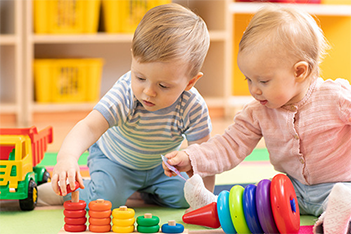
Index > Services > Testing > Toy products
Regulations/Standards Standard DescriptionGB 6675.1 GeneralGB 6...

Regulations/Standards | Standard Description |
GB 6675.1 | General |
GB 6675.2 | Mechanical and physical properties |
GB 6675.3 | Combustion performance |
GB 6675.4 | Migration of specific elements |
GB 6675.11 | Mechanical and physical properties of indoor and outdoor activities for domestic swings, slides and similar uses |
GB 6675.12 | Mechanical and physical properties of toy scooters |
GB 6675.13 | Chemistry set toys other than experimental toys |
GB 6675.14 | Technical requirements and test methods for finger paints |
GB 19865 | Electric toy safety |
GB 5296.5 | Consumer Instructions Part 5: Toys |
GB/T 9832 | Limits for Hazardous Substances in Toy Coatings |
GB/T 30400 | Safety and hygiene requirements for toy fillers |
GB24613 | Limits for Hazardous Substances in Toy Coatings |
GB18401 | National Basic Safety Technical Specifications for Textile Products |
The testing standards for children's toys mainly include the following aspects:
Physical and mechanical performance testing: including small component testing, edge and tip testing, tensile, pressure and torsion testing, sound requirements, magnet and magnetic component requirements, etc. These tests aim to ensure the durability and strength of toys under normal use and abuse, prevent the risk of swallowing or suffocation caused by small parts falling off, and protect children's hearing.
Combustion performance testing: Evaluate the flammability of toy materials to ensure they are not easily combustible, thereby reducing the risk of fire. Especially plush toys and other materials need to undergo flame retardant treatment.
Chemical performance testing: detecting the content of heavy metals (such as lead, cadmium, chromium, nickel, arsenic, etc.) in toys, as well as the migration of harmful chemicals such as formaldehyde, phenol, and vinyl chloride, to ensure that the content of these substances is within safe limits and avoid potential threats to children's health.
Electrical toy safety testing: For live toys, special emphasis is placed on electrical safety performance, such as insulation, heat resistance, moisture resistance, battery safety, and electromagnetic compatibility requirements.
Identification and usage instructions: Toys must be accompanied by clear safety warning labels and usage instructions, indicating the applicable age range, safety warnings, and other information, guiding parents and children to use toys correctly and avoid safety issues caused by misuse or abuse.
Main testing standards:
GB 6675: Important safety standards that Chinese children's toys must comply with, covering basic specifications for toy safety, mechanical and physical properties, flammability, migration of specific elements, and other aspects.
ASTM F963: American toy safety standard, including requirements for physical and mechanical properties, chemical safety, and other aspects.
EN 71: European Toy Safety Standard, covering multiple aspects such as physical and mechanical properties, chemical safety, etc.
AS/NZS 8124: Australian toy safety requirements, including physical and mechanical properties, chemical safety, etc.
ST 2016: Japanese toy standards, involving physical and mechanical properties, chemical safety, etc.
These standards ensure the safety and health of children when using toys through detailed testing items and strict requirements.